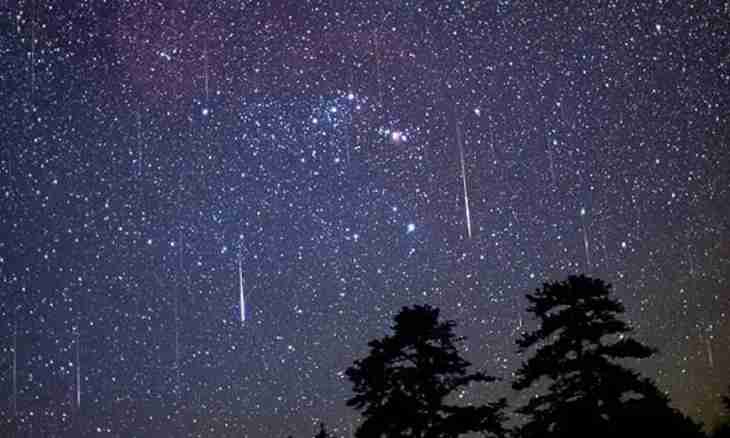In an age of space and science, during an era of rationalism and pragmatism there is a romantic superstition: if the star falls – it is necessary to make a wish. After these words the long discussion on a subject usually follows: "what is a shooting star and why it falls".
Shooting star (meteor, race car) – a small body which moves in space. Sometimes these bodies fall on the Earth's surface, and then scientists have an opportunity to study their nature and properties. It is established that the majority of meteorites stone, but there are also meteorites showing metal properties (entirely consisting of metals) and mixed. Metal meteors are called "iron", they are very often rich with the iridium metal content, one of the most rare chemical elements on Earth. The origin of meteorites can be various: small asteroids, cosmic dust, splinters of comets, planets or large asteroids. And if to accept that the surface of the planet – Paragraph B, then Paragraph A can serve a belt of asteroids which is between Mars and Jupiter, the Kuiper belt (behind an orbit of Pluto) or an Oort cloud.
Flying by any large space objects, for example, of planets, meteors are taken them gravitational fields and attracted. At atmospheric entry almost all meteorite burns down, and "earth" is reached by only its small part which can have the weight ten times smaller than initial. For the observer the flying meteorite looks in the form of bright flash against the background of the night sky with which the shining loop tries to keep step. It seems that the tiny star falls.
Sometimes the meteorites which were earlier a whole, passing through the atmosphere, are split up for fragments and drop out to Earth in the form of a meteoric rain. When falling the race cars leave a print on the planet. These prints are called craters. Depending on a corner under which the body falls except a crater there can be a deep and long scar trench. The largest crater on the planet Earth is a crater of Wilkes Land about 500 km in the diameter. The meteorite of Goba weighing 66 tons is considered the largest of the found meteorites. And the most mysterious - the Tungus meteorite which fell in 1908 near the Podkamennaya Tunguska River. Its phenomenon is that it blew up and did not leave behind a crater. It served as the beginning of a number of very fantastic hypotheses.
